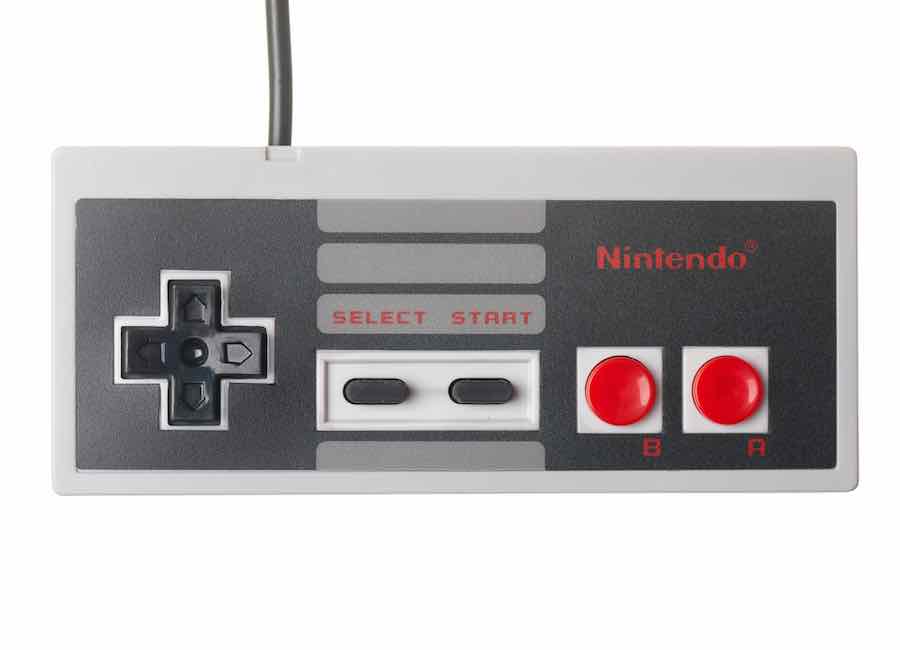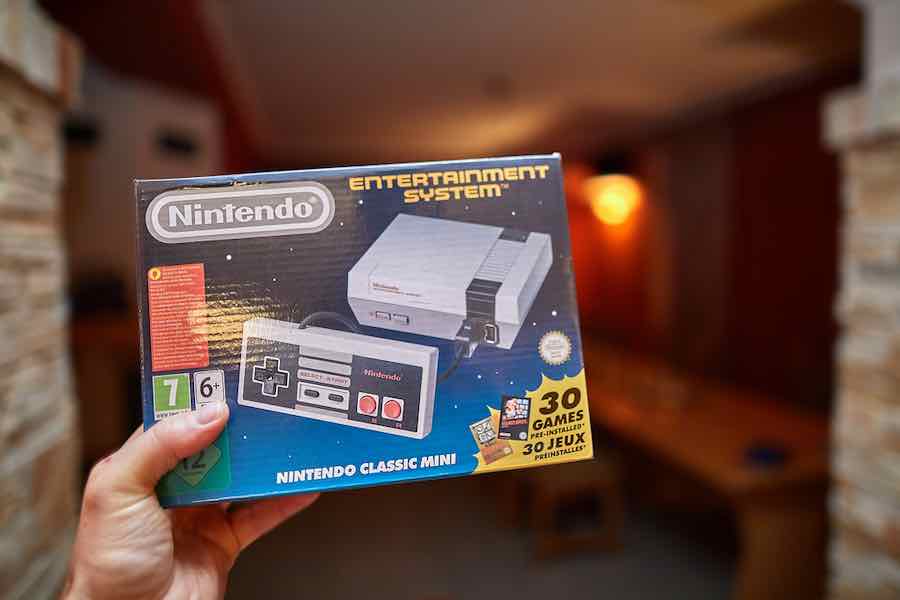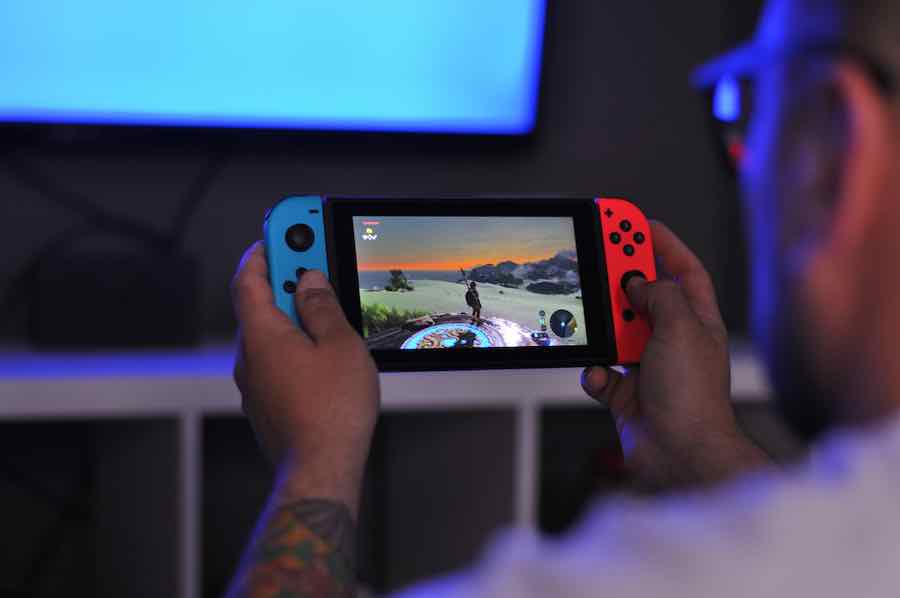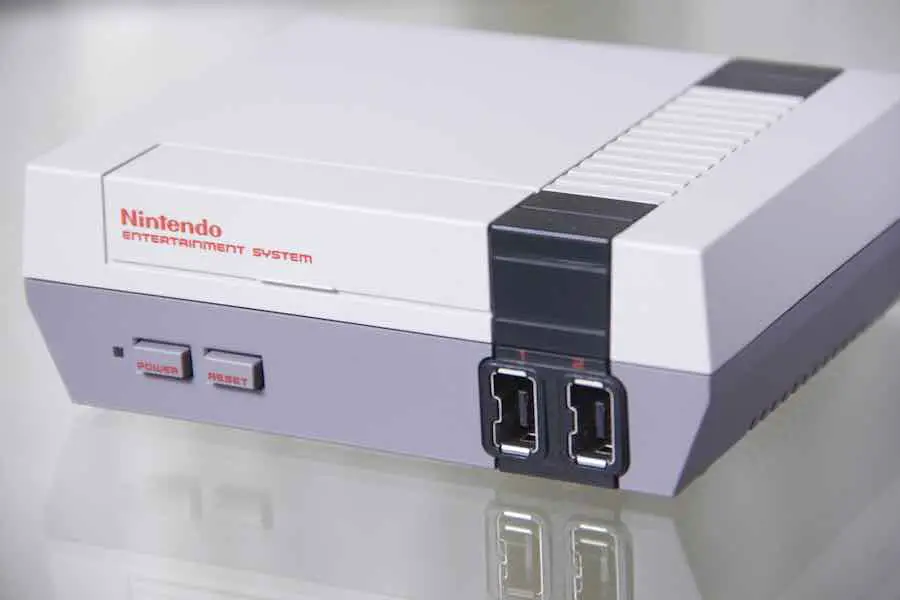The Nintendo Entertainment System, or NES for short, is one of the most iconic gaming systems the world has ever seen. But, with how quickly it rose to popularity and how seemingly unknown it appears to be today, it leaves us curious about the history of the NES.
From its humble beginnings to its most popular years and ending with its fall in use, Level Unlocked is uncovering every inch of the Nintendo Entertainment System’s life.
The Early Years
A Rocky Start
Before Nintendo started dabbling in full-on gaming systems, they had released a series of arcade games that were quite the hit with the public. After seeing the success that these arcade games had on people of all ages, Nintendo knew they had to keep going.
In 1983, Nintendo released the NES in Japan. It was originally marketed as the Family Computer or the Famicom and it was a cartridge-based game console that people would insert Nintendo games in and then play from.
This was the first console that allowed for interchangeable cartridges, and this in and of itself was exciting enough for customers to want to buy. After seeing the success of Donkey Kong, everyone wanted to see what else Nintendo had to offer.
In its first months, the console was popular, but it did experience its occasional problems. People reporting slow responses and even games freezing. After looking closely into the occasional freezing, Nintendo found a manufacturing error and actually called for all NES’s to be recalled.

Round Two
In 1984, Nintendo re-released the Famicom claiming to fix the manufacturing errors. And it sure did. The console immediately exploded in popularity, topping the charts for most popular video game manufacturers.
Almost three million of these Famicoms were sold during this production year. Still, though, this exciting piece of technology was only available in Japan.
After seeing its clear success, producers wanted the console to go international. Thus, their idea was to market the Famicom to other countries as the Nintendo Entertainment System, and one of their first goals was marketing to the US.
Unfortunately, at the time, video games like Nintendo’s just weren’t popular in the US. They saw the way that Nintendo’s NES struggled the first time around and they were stuck in a time opposed to progress. But, Nintendo was still willing to try.
They proposed the idea of rebranding the NES once again and adapting the idea of a home computer into a console, similar to how they wanted originally.
Now, the console went from being a two-remote interchangeable cartridge console to an almost full computer. The newly named Advanced Video System home computer came standard with a mouse, keyboard, joystick, and more.
The Not-So-Amused USA
Unfortunately, even the AVS wasn’t quite good enough for the American market. Despite having quite a popular-looking debut at the 1985 Winter Consumers Electronics Show, consumers were still extremely skeptical about it all. The functionality wasn’t right, the look was confusing– it was just too much for the times.
Negative review after negative review, Nintendo knew they needed a new approach to the US market. But how?
Its Rise in Popularity

NES’s Re-redesign
After a disappointing start to its career in the US, Nintendo decided to get rid of the complicated computer look entirely.
They had no other choice but to try to create a product that they knew the general American public would love. It couldn’t be too flashy, too complicated, or too boring: it had to be just right.
Thus, Nintendo got rid of all the bells and whistles that the AVS had strung about. Once again, the home computer aspect was gone, it was back to being a video game console. However, it was a video game console without looking like one.
Because the American market was so averse to video games, they wanted something that would appeal to a whole new group of people. Instead, the console looked sleek, clean, and they called it an ‘entertainment system’ instead.
When it came to the cartridges on the new Nintendo Entertainment System, they didn’t poke out as obviously as they once did. Instead, you put them in a slot and they seemingly disappeared out of sight. Nintendo thought this would add to the professional nature they were trying to achieve.
Even once the second redesign was finished, American retailers were still unsure about the product as a whole. But, Nintendo was ready for launch.
Gaining US Success
At first, it was slow going. In order to even get into retailers, Nintendo had to put up huge risks and large bargains like promising to pay for any unsold merchandise after 90 days. At the time, this seemed absolutely crazy for companies, but at no risk to retailers, they agreed. With this, Nintendo’s NES started being sold in stores.
During the first holiday season, Nintendo started to see sales trickle in. It wasn’t any substantial, but it was enough to keep them afloat. After a few months, however, popularity started to pick up. People were beginning to see how well these consoles worked and how much fun they truly were for families.
Along with the NES, Nintendo had also released something they called ROB, a Robotic Operating Buddy that responded to lights on the screen as if it were playing video games with you. Together, along with Nintendo’s popular games, Nintendo was able to start expanding.
Soon, you could find Nintendo Entertainment Systems and other games throughout Los Angeles stores, stores in Chicago, San Francisco, until, finally, it went nationwide in late 1986. Soon, Nintendo started partnering with huge retailers like K-Mart and Sears to sell thousands upon thousands of products all year long.
NES at its Peak
Industry Trailblazers
By the late 1980s, early 1990s, Nintendo was thriving in the American markets. It was out-selling all of its competitors and leading the industry in terms of both profit and innovation.
During this time, Nintendo released some of its most popular games too, helping more consoles to be sold and even more money to be made. Quickly, people all over the country were becoming obsessed with the fun that these entertainment systems brought.
This popularity wasn’t only thriving in the US, either. Back over in Japan, they were seeing their own explosion of success from the Nintendo Entertainment System. Though it was still regarded as the Famicom, about ⅓ of all households had one of their own by 1988. In both the US and Japan, having one of these entertainment systems was becoming a staple for any family that could afford one.
Biggest Games
Between 1985 and 1990, Nintendo sold some of its biggest, most popular games ever.
Super Mario Bros
It was 1985 when Super Mario Bros was first released. Almost immediately, this game was a smash hit. In fact, Super Mario Bros went on to become one of the highest-selling video games in all video game history, selling over 40 million copies. This family-friendly game also did incredibly well in Japan, as well as the second and third versions of the game.
Even today, Super Mario Bros is one of those Nintendo games that everybody knows about–whether it’s your mom, dad, grandma, or younger sister. Super Mario Bros made a huge impact on the world when it was released back in the mid 80s, and that popularity still reverberates today.
The Legend of Zelda
First released in ‘86 only in Japan and then a year later in the US, The Legend of Zelda was a quest-based game that families across the world fell in love with.
Along with its incredible graphics and unique story, this game was one of the first ever to come equipped with an internal battery to help save your data as you move through the game. This made it much for consumers to play the game all the way through during different times. No longer were you stuck trying to complete a whole level or game in one sitting.
The Legend of Zelda, like Super Mario Bros, was huge for Nintendo. It’s sold almost 7 million copies and has more sequels and crossovers than you could count.
Duck Hunt
Another popular release for the Nintendo Entertainment System was that of Duck Hunt. Not as popular today as some of Nintendo’s other games, this shooter game was an instant classic when it first came out in ‘84.
Simply put, you used your console to shoot ducks on the screen, getting points for each one you shoot. Straightforward and with graphics that impressed the everyday public, Duck Hunt was a great game to show consumers how simple yet fun the NES could be.
Eventually, the game grossed over 28 million in sales and was dubbed one of the NES’s best games of all time. Back in 2014, a new version of Duck Hunt was actually re-released by Nintendo’s new-at-the-time Wii Console. It was quite a blast from the past for some players.
Tetris
Released back in 1989, Tetris was a relaxing yet strategic puzzle game made exclusively for Nintendo Entertainment Systems. While there were tons of versions of this game available for the CPU, Nintendo was the only one who was able to seal the rights for a more formal arcade version.
The NES format made over 5 million in sales and sold over 8 million copies across the globe. Even today, versions of this game can be played practically everywhere, with tournaments still being held. (And they play the NES version, too!)
Being Replaced
Losing Momentum
Unfortunately, after seeing major success for so many years, the Nintendo Entertainment System started to lose momentum.
While it was still entertaining, the NES was quickly being surpassed by other more digitally advanced gaming consoles and entertainment systems. Caught between thriving PC and Genesis companies both in the US and in Japan, it was clear that Nintendo wasn’t the top dog anymore.
In an attempt to gain back traction and popularity, Nintendo released the Super Nintendo Entertainment System in the US and the Super Famicom in Japan. While these were more advanced versions of the well-loved NES, the world seemed to have already moved past the Nintendo system and the games that came with them. No matter what upgrades Nintendo decided to make to their systems, they just weren’t seeing the popularity they once were.
By the time that 1995 rolled around, there simply was no more use for the Nintendo Entertainment System on the market. That year, they became discontinued after practically a decade of being a staple within households. Soon, these guys became just another fad in both the American and Japanese industry.
The Start of Emulation
Of course, it took a few years for people to truly start appreciating what Nintendo had introduced. But, soon, the games that were once only available for Nintendo Entertainment Systems became classics, sought-after, and somewhat popular once again. While their popularity never reached the heights that it did back in the mid 80s, in the late 90s, the industry did see a slight revival.
With this, video game producers and companies started working towards making these NES games compatible for other systems other than just the NES. Called emulators, this allowed people to enjoy the fun of their classic Nintendo Entertainment System games right on their home computers. Once again, people began realizing just how fun Nintendo’s games were.
Unfortunately, while this was great for those looking to experience the beauty of their old games, this wasn’t great for Nintendo. They didn’t profit any money off it and claimed that it was software piracy.
So, a few years later, Nintendo decided to re-release many of their classic Nintendo Entertainment System games for their other, newer consoles. At the time, their Wii console was exploding in popularity, so they decided to make these games compatible there.

A Surprising Re-Release
Nintendo took the world by storm when it announced back in 2016 that it would be re-releasing the well-loved Nintendo Entertainment System. Only, this time around, there would be some major changes. This re-release was actually a miniature replication. Called the Nintendo Entertainment System: NES Classic Edition (we know, it’s a mouthful), this mini NES came pre-installed with 30 classic games.
This console was designed to attach to your Wii or TV through HDMI, but it didn’t quite receive the popularity that Nintendo was hoping. About a year later, the mini system was discontinued. They tried to bring it back once more, but, in 2018, the console was permanently discontinued by Nintendo.
NES’s Influence Today
Today, it’s impossible to talk about video games without talking about Nintendo. Nowadays, consoles like the Wii are no longer popular, but Nintendo has moved forward with other, more bustling projects. Today, you can see the influence of compact, connect-to-TV devices with the launch of their new Nintendo Switch.
While obviously much more advanced than the NES we saw back in the 80s, newer consoles like the Switch still are directly reminiscent of the entertainment system they were born from.

There are also still competitions held all around the world that utilize these systems or these games. Nintendo World Championships, even, was held up until 2017, with competitors playing classics like The Legend of Zelda for prizes and recognition. This place celebrates a community of people who will always appreciate Nintendo for what’s brought, no matter how old some of the games might be.
Even in 2020, people are still rushing to buy versions of Super Mario Bros and The Legend of Zelda. These are games that are continuously being revived and shown to be completely timeless in terms of video games.
Whether you had a chance of trying the original version or had no idea that there even was one, games like Super Mario Bros are still such a family classic. That only goes to show how influential these rudimentary entertainment consoles were even back in the 80s.

NES’s Long Journey
Since the 80s, the Nintendo Entertainment System has gone through a lot. From so many structural changes to various different name changes, it took a lot of trial and error to get this revolutionary machine right.
While it eventually died out in popularity, the impact that it had on the world of video games and personal entertainment was immense. Even today, you can ask your parents or grandparents about the NES, and they’re sure to remember.
While Nintendo’s gaming systems look a bit different nowadays, you can find glimpses and hints of the NES every once in a while. Technology has advanced quite a bit, a bit further than the need for the basics of the NES, but its presence is still strong within the video game community as a whole.
The next time you’re lucky enough to come across one of these pieces of history–whether it be the game or console–make sure you take the time to appreciate all that’s brought. After all, the Nintendo Entertainment System has made quite an impact.

